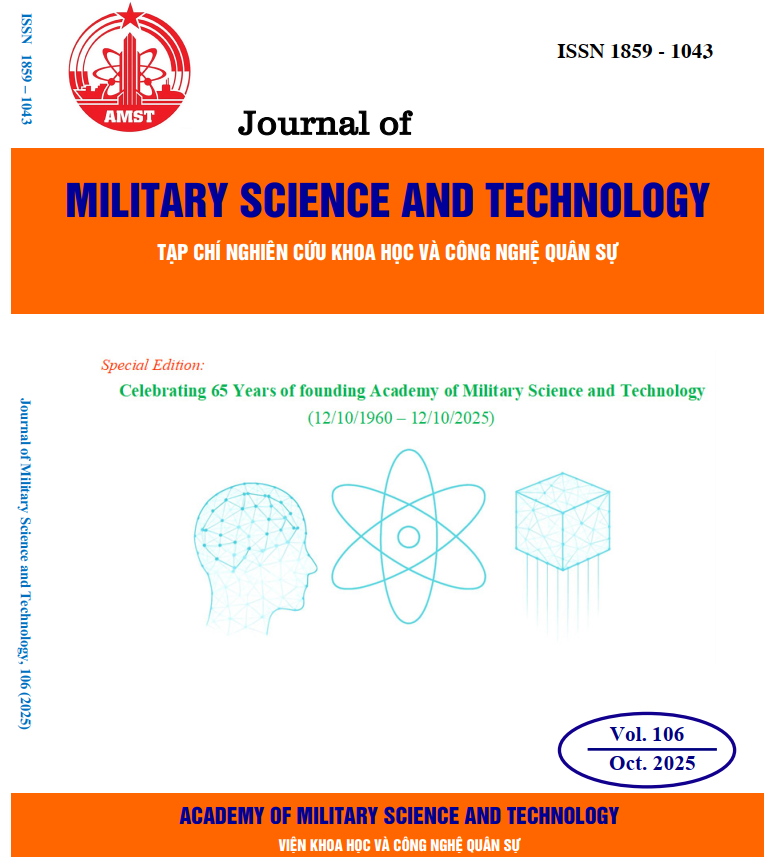Development of a natural functional supplement from pleurotus ostreatus and cordyceps militaris to mitigate side effects of chemotherapy and radiotherapy
166 viewsKeywords:
Pleurotus ostreatus; Cordyceps militaris; Antioxidant activity; Immunomodulation; Chemotherapy side effects.Abstract
Chemotherapy and radiotherapy, while effective against cancer, often induce oxidative stress, immunosuppression, and systemic side effects that impair patient quality of life. This study aimed to develop a natural functional supplement from Pleurotus ostreatus and Cordyceps militaris to mitigate these adverse effects. Optimized extraction was achieved using a 30:70 ethanol–water solvent at 60 °C for 120 min, maximizing phenolic- and protein-associated bioactive recovery. The combined extract demonstrated notable antioxidant activity, with IC₅₀ values of 41.22 ± 2.94 mg/mL (DPPH assay) and 58.73 ± 3.81 mg/mL (lipid peroxidation inhibition), indicating moderate free radical scavenging and membrane lipid protection. Macrophage proliferation assays revealed a biphasic response, with maximal stimulation (12.04 ± 0.21%) at 0.0016 mg/mL, suggesting potent immunomodulatory effects at low doses. These findings support the synergistic potential of P. ostreatus and C. militaris bioactives in reducing oxidative damage and enhancing immune function, offering a safe, sustainable adjunct for patients undergoing cancer therapy.
References
[1]. Zawrzykraj, M., et al. "The effect of chemotherapy and radiotherapy on stem cells and wound healing. Current perspectives and challenges for cell-based therapies", Biomedicine Pharmacotherapy, 168, p. 115781, (2023).
[2]. Liu, B., et al. "Exploring treatment options in cancer: tumor treatment strategies", Signal Transduction Targeted Therapy, 9(1), p. 175, (2024).
[3]. Tian, F., et al. "The effects of dietary Cordyceps militaris substrate on growth, immunity, gonadal quality, and gut microbiota of the sea urchin Strongylocentrotus intermedius", Animal Feed Science Technology, p. 116428, (2025).
[4]. Dai, K.-y., et al. "Extraction, structural identification and anti-tumor activity of two Cordyceps militaris polysaccharides evaluated by S180 tumor-bearing mice", Industrial Crops Products, 210, p. 118163, (2024).
[5]. Łysakowska, P., A. Sobota, and A. Wirkijowska. "Medicinal mushrooms: Their bioactive components, nutritional value and application in functional food production—A review", Molecules, 28(14), p. 5393, (2023).
[6]. Sen, P., et al. "Nutrients and Bioactive compounds of Pleurotus ostreatus mushroom", NewBioWorld, 3(2), pp. 8–12, (2021).
[7]. Sreedharan, P.L., et al. "The Emerging Role of Oyster Mushrooms as a Functional Food for Complementary Cancer Therapy", Foods, 14(1), p. 128, (2025).
[8]. Akbal, A., S. Şahin, and B. Güroy. "Optimization of ultrasonic-assisted extraction of polysaccharides from Ulva rigida and evaluation of their antioxidant activity", Algal Research, 77, p. 103356, (2024).
[9]. Chou, Y.-C., et al. "Current progress regarding Cordyceps militaris, its metabolite function, and its production", Applied Sciences, 14(11), p. 4610, (2024).
[10]. Liu, J.-y., et al. "Immunomodulatory and antioxidative activity of Cordyceps militaris polysaccharides in mice", International Journal of Biological Macromolecules, 86, pp. 594–598, (2016).
[11]. Trí, L.M., et al. "Investigation of Biological Activities of Mixed Extracts of Medicinal Mushrooms (Pleurotus Citrinopileatus and Cordyceps Militaris) in Protecting Human Health", TNU Journal of Science and Technology, 228(13), pp. 476–482, (2023).
[12]. Nguyen, D.T., et al. "Ultrasound-assisted Extraction of β-glucan from Vietnam Pleurotus Citrinopileatus Enhances Anti-oxidant Activities", 15(5), p. E200624231105, (2025).
[13]. Heleno, S.A., et al. "Tocopherols composition of Portuguese wild mushrooms with antioxidant capacity", Food Chemistry, 119(4), pp. 1443–1450, (2010).
[14]. Kalogerakou, T. and M.J.A. Antoniadou. "The role of dietary antioxidants, food supplements and functional foods for energy enhancement in healthcare professionals", 13(12), p. 1508, (2024).
[15]. Preethi, K., G. Kuttan, and R.J.P.b. Kuttan. "Antioxidant Potential of an Extract of Calendula officinalis. Flowers in Vitro. and in Vivo", 44(9), pp. 691–697, (2006).
[16]. Ovcharenko, D., D. Mukhin, and G.J.P. Ovcharenko. "Alternative cancer therapeutics: unpatentable compounds and their potential in oncology", 16(9), p. 1237, (2024).
[17]. Sabino Ferrari, A.B., et al. "Pleurotus ostreatus and Agaricus subrufescens: investigation of chemical composition and antioxidant properties of these mushrooms cultivated with different handmade and commercial supplements", International Journal of Food Science Technology, 56(1), pp. 452–460, (2021).







